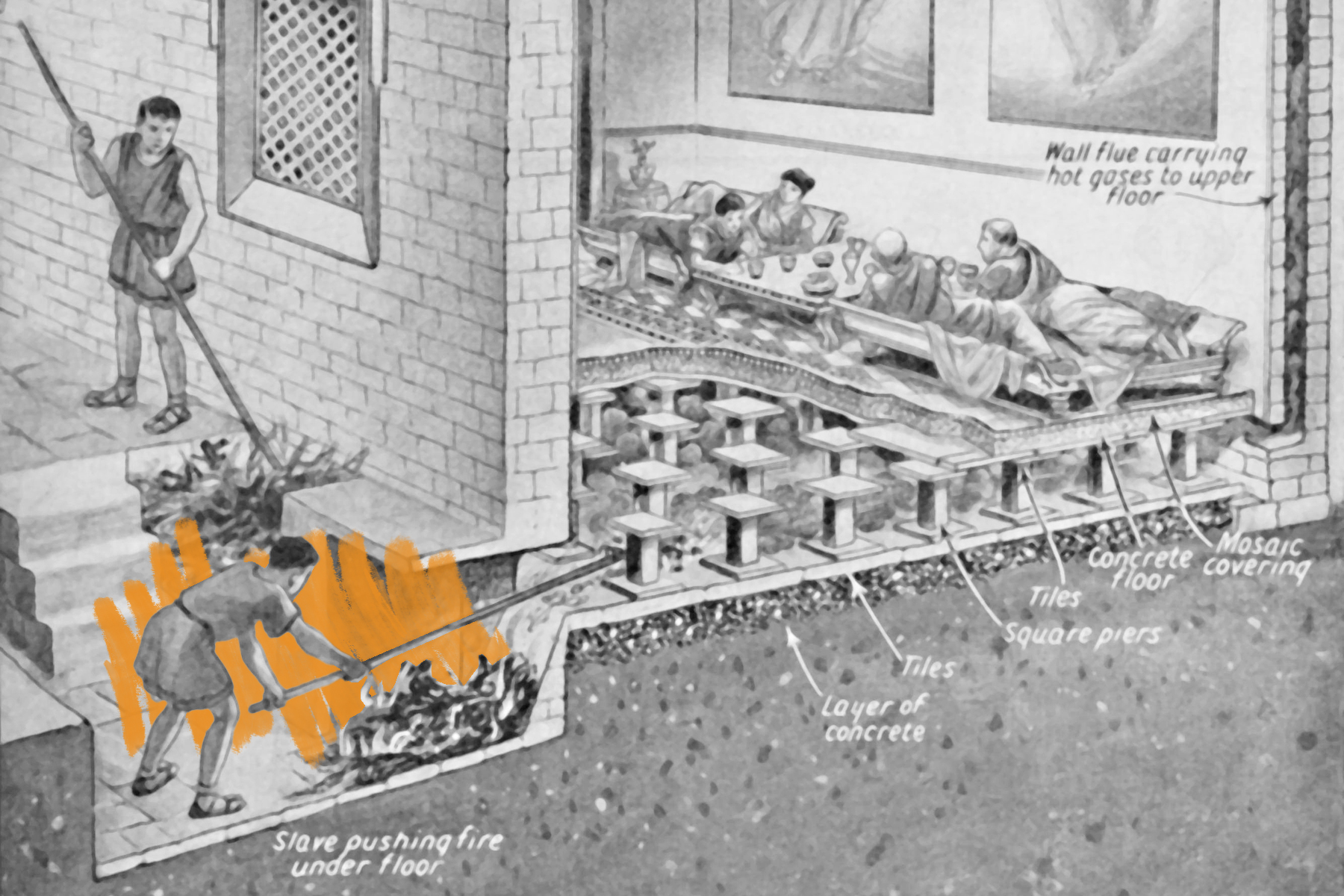The ancient Romans had central heating.
The ancient Roman people used many technologies that seem surprisingly modern — including hypocausts, a precursor to central heating that’s similar to today’s radiant floors. The technique was primarily used to heat public bathhouses, but it was also widely used in private homes, particularly villas, in chillier areas of the Roman Empire. Buildings heated with a hypocaust system were raised up on pillars, creating an empty space underneath. An external furnace called a praefurnium, which was often wood-burning, piped in hot air to the area. That air would warm the stone or tile floor above, known as a suspensura. The air would escape from the subfloor through flues (sometimes made of terra-cotta) running up through the walls of a home, providing extra heat on its way up. Sometimes the entire wall would be hollow.
Pushing heat through the floors and walls helped keep Roman baths comfortable, preventing sudden temperature changes when entering or leaving warm water. Some rooms were simply heated with no water at all, designed for sauna-like dry sweating. But hypocausts also heated the water itself as it entered the facility. As the water dropped down from the aqueduct, it would immediately pass over a furnace chamber before being piped into the facility. As the water cooled, it could be used for tepid or cold baths in the complex. Hypocausts have been around for at least as long as Roman baths themselves; the technology may have been borrowed from the ancient Greeks and improved upon. This ancient heating system can be seen today at various surviving Roman baths, including the Stabian Baths in Pompeii, built around 125 BCE.







